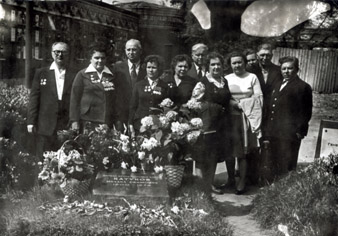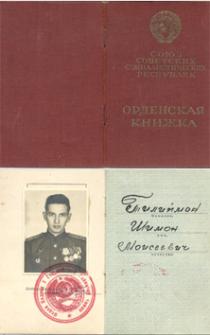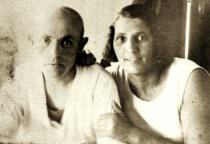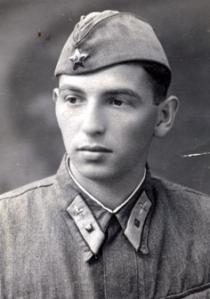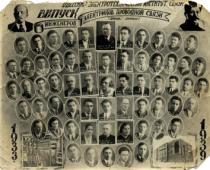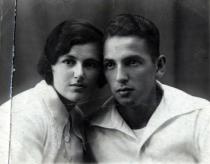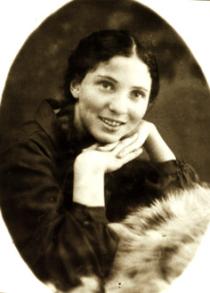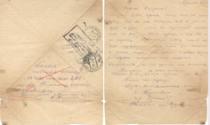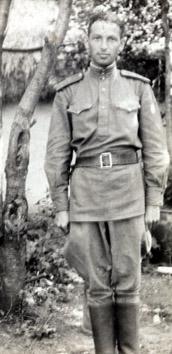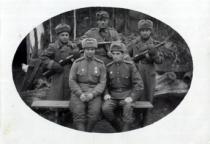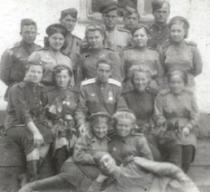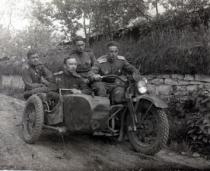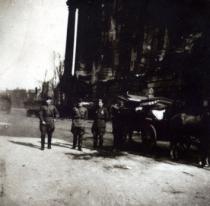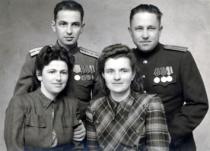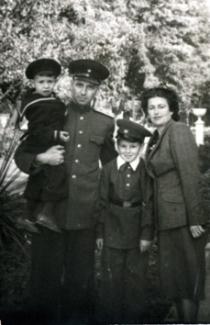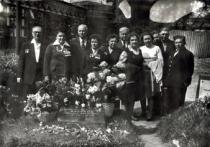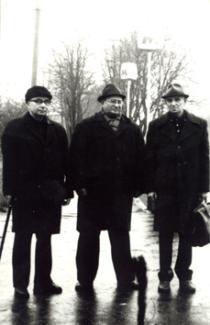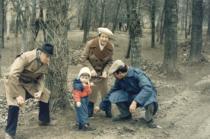This is me Semyon Tilipman (third from left) at the meeting of veterans of the First guard tank army. This photo was taken in Moscow in 1976, in the Novodevichie cemetery, at grave of Commander of the army Michael Efimovich Katukov. From left to right: telephone operator Igor Tsykolovski, Olga Shamardina, I, Semyon Tilipman, Nadejda Kotova, Ania Krotova, Nikolai Evtushenko. The first on the right is Vlladimir Miakushko.
The friendship that started at the front is the strongest friendship ever. My wife and I have kept in touch with my fellow comrades. We corresponded and met with them and mailed greetings on their birthdays. Few times my wife and I went to celebrate 23 February, the Soviet Army Day that we also celebrate as the Day of the first guard tank army with my fellow comrades in Moscow. In summer 1976 we came to Moscow to come to the grave of Marshall M.E. Katukov, our commander. He had died six years before we got together to celebrate the 50th anniversary of the army on 23 February 1983.
I remember my young years at the front. In February 1943 a new tank army was formed near Moscow on the basis of our army 29. Its commander became Michael Efimovich Katukov [Michael Efimovich Katukov, 1900-1976, was a Soviet commander, Marshall of tank armed forces in 1959, Hero of the Soviet Union in 1944 and 1945. During the Great Patriotic War he was commanding officer of a tank division, brigade, corps, guard tank army since 1943.] We got a new division of T-34 tanks. I was chief of the telephone facility of a of Communications regiment. After our successful completion of the Stalingrad battle Germans intended to gain revenge at the Kursk salient. In summer 1943 near Prokhorovka two heavily armed tank units collided. There was the third tank army near Prokhorovka and our first tank unit was deployed further to the south in the direction of Kharkov. Our army cut the roadway Kharkov-Poltava. We were holding back German units that were striving to cross the Kursk salient. Katukov, commander of the tank army, was at the vanguard tank unit on the firing line and we were responsible for supporting his communication with the army headquarters. He and commander of the brigade were watching the battle and gave verbal commands to the army headquarters that was developing the tactics of the battle: where to send forces, what additional units to allocate, involve artillery or even air forces. During the battle commander was in a trench with a tank over it; it made a reliable hiding spot. Communications operators that were responsible for supporting communication with the army headquarters were also in the trench with commander.
